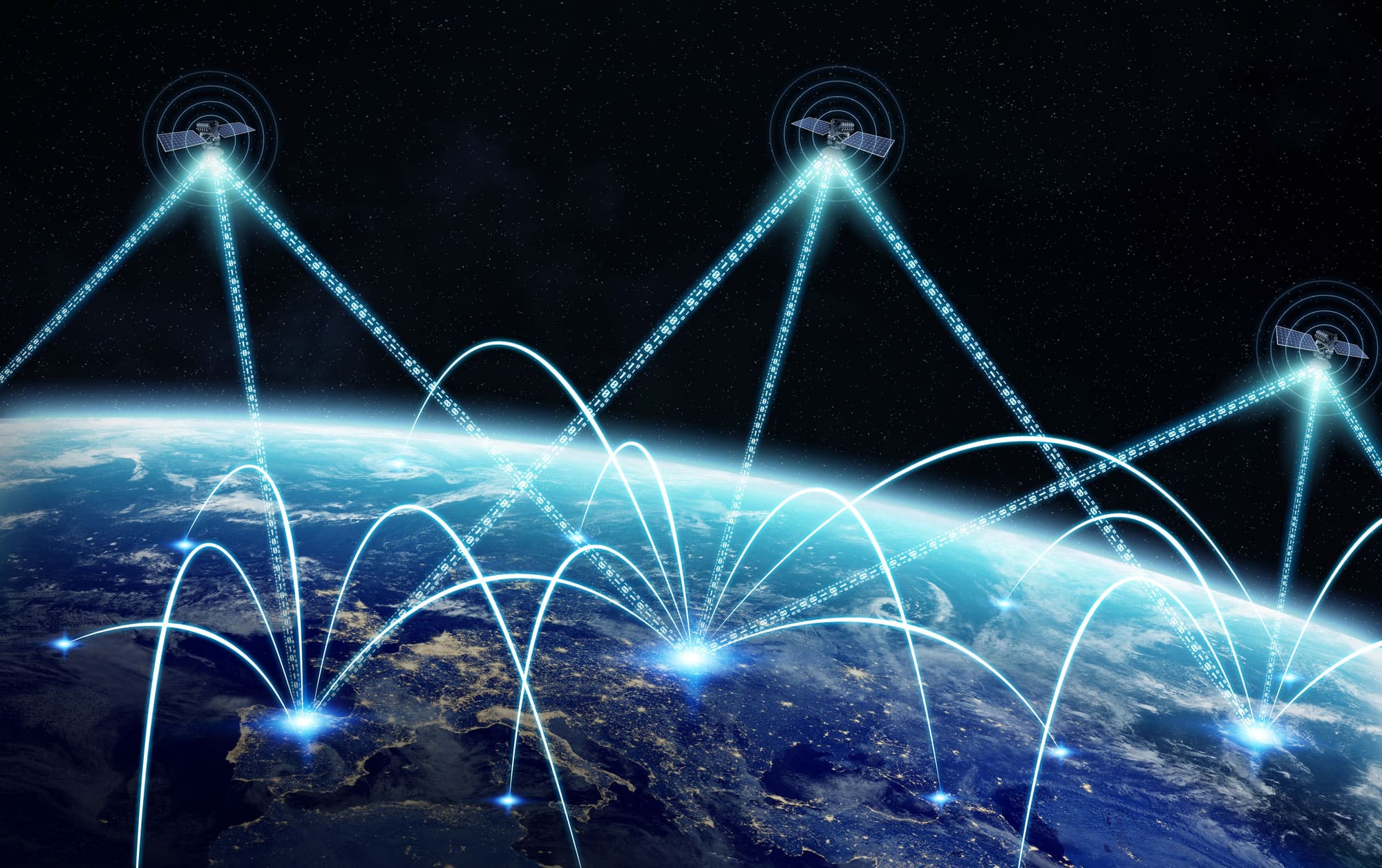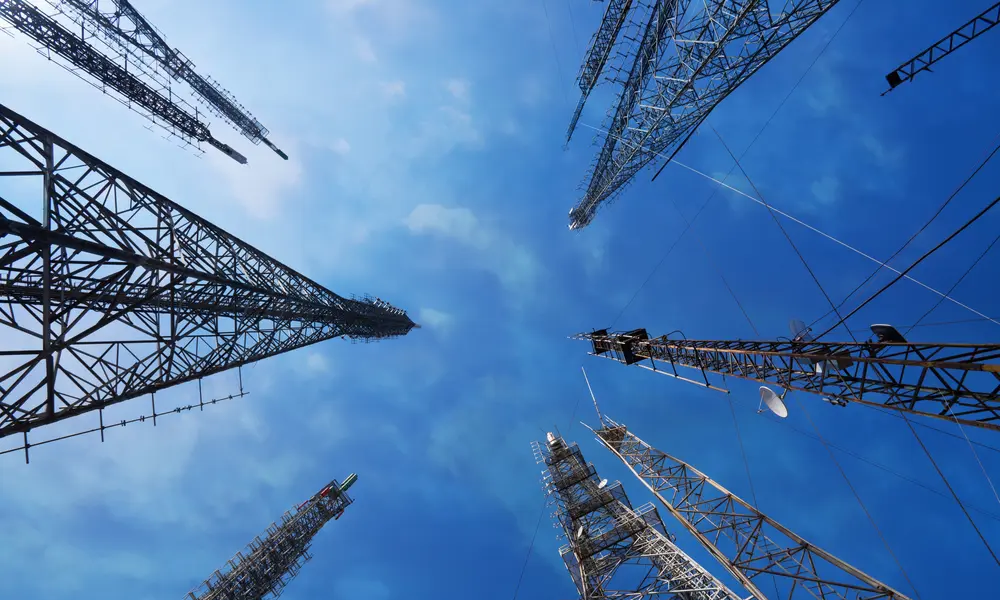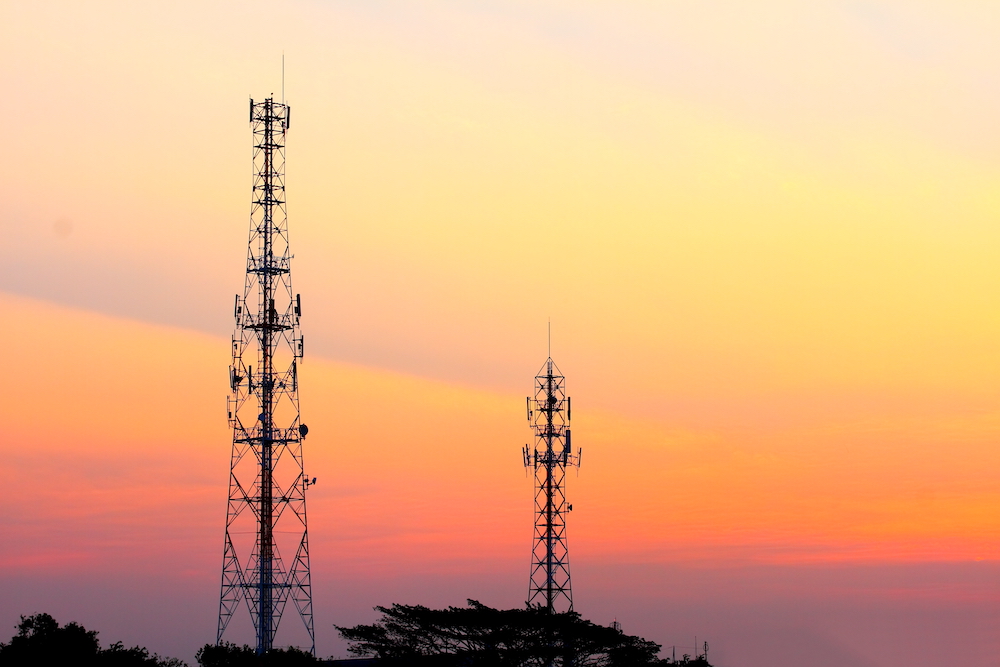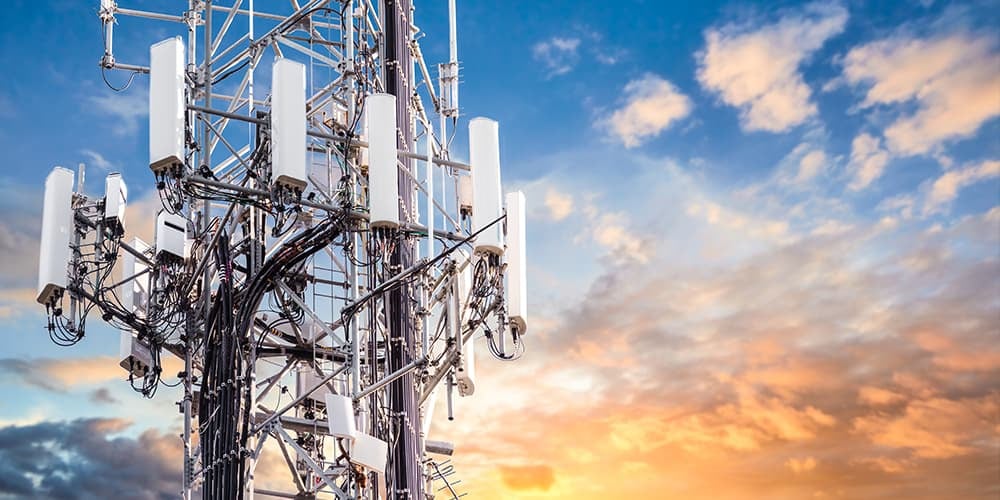2023 Highlights and 2024 Forecast
by Baruch Pinto
With 2023 concluded and 2024 just kicking off, it’s the time to reflect on the past year and look to the future. Here’s what we think were the most important events and topics that were discussed over the course of the last year from the perspective of connectivity. Some of them may open new opportunities, some may require changes, but all of them will definitely impact cellular technology and the IoT connectivity market in the next few years.
eSIM and the new RSP standard
2023 was the year eSIM got a real boost. After a period of stagnation in 2021, from 2022 onward there was a consistent adoption rate of eSIM technology through 2023. GSMA Intelligence research shows that 83% of enterprises consider eSIM an important technology to achieving success in their IoT deployments. Experts assess that eSIMs will become the dominant SIM technology in the next 2–3 years.
It will largely happen due to the new Remote SIM Provisioning IoT specification (SGP.32) published by the GSMA in May 2023 and aimed at solving the complexities of remote SIM provisioning with previously available Consumer and M2M specifications for IoT. It eliminates the need for carrier integration and gives enterprises the same flexibility and control as consumers, marking a significant advancement for IoT implementations, simplifying IoT connectivity and reducing the time to market for IoT deployments. Along with the rise in eSIM adoption, the publication of the GSMA SGP.32 specification is expected to accelerate growth of connected device use.
Experts believe the new standard to greatly benefit every company that deploys IoT devices as well as most of the players within the telecom ecosystem. The SGP.32 will likely become available for use at the end of 2024, as it will take some time to complete all specifications for devices and eSIM test and compliance. However, there already are some proprietary pre-standard solutions in the market that are fully compatible with SGP.32 and have been commercially deployed and tested, like WebbingCTRL. It allows enterprises to use simple, scalable and future-proof connectivity for their IoT deployments without having to wait until the new standard becomes available, with a seamless transition to SGP.32 later.
A combination of eSIM technology and the new standard sets the ground for many more devices to be connected and different use cases that can be covered, so we expect further boost in the next year. With its benefits made obvious for the industry, eSIM may also pave the way for emerging technologies like iSIM and SoftSIM that haven’t really picked up yet but may have their own use cases. For example, Juniper Research experts expect that iSIM devices will proliferate during 2024, particularly driven by low-power wide-area (LPWA) network technologies where reducing size is a priority.

Non-terrestrial networks
Last year, steps were taken toward convergence between the cellular and aerospace services, supported by the 3GPP standardization organization. 2023 saw the first trials by satellite companies like Skylo and Sateliot cooperating with MVNOs to demonstrate seamless transition from cellular to satellite connectivity. Another initiative is Elon Musk’s Starlink project that will provide satellite to cell connectivity and will be launched during 2024.
With its Release 17, the 3GPP supports 5G New Radio-based satellite access, described as non-terrestrial networks (NTN). In 5G, non-terrestrial networks represent a plethora of connection scenarios, including various satellite-based connectivity scenarios with different flying altitude (GEO, MEO or LEO satellites) and coverage area. While 3GPP Release 17 can be considered as the inception of NTN and the technology enabler in 5G systems, later releases will incorporate several enhancements and extensions, for instance the incorporation of airborne stations, high-altitude platform systems (HAPS) and more onboard processing within the nodes.
With expected data rates, NTN 5G will not be able to compete with terrestrial 5G, but it will complement terrestrial 5G systems and provide connectivity in unserved and underserved regions. According to GSMA intelligence, even subsidies for terrestrial networks will not be able to achieve universal coverage, due to the exponential costs of covering the final 1–5% of population. Alternative solutions are therefore needed. NTN satellite-based communications may focus on worldwide ubiquitous coverage in maritime, remote and polar areas. They can also be used for network service resilience in case of emergency due to natural disaster such asan earthquake to support IoT coverage, as well as tracking and broadcasting.
An increased number of satellite launches will cause a surge in the development of services in 2024, driven by the activities of satellite network operators such as Starlink. Juniper Research anticipates that there will be over 300,000 connections accessing 5G satellite networks in 2024.
However, there still may be some obstacles to overcome, such as limited availability of devices with native NTN capabilities, regulatory hurdles in different jurisdictions, and considerable capital expenditures required for additional satellites deployments.

5G Standalone
5G standalone (SA) networks use fully independent 5G infrastructure as opposed to 5G non-standalone (NSA) that rely on 4G/LTE core and therefore can’t offer any 5G functionality except radio connectivity. 5G SA deliver enhanced performance, lower latency, and support a diverse range of applications and services like Voice over New Radio and Network Slicing, enabling a wide range of use cases, from enhanced mobile broadband to critical communications and massive IoT deployments.
However, 5G deployment is far from complete. Further densification of 5G mid-band sites is needed for the full 5G experience. In November 2023, it was estimated that by the end of the year, 5G mid-band would be deployed in around 30 percent of existing 4G sites globally.
Switching to the 5G SA core is not an easy shift because it requires a major change in the underlying infrastructure. A year ago, Deloitte expected the number of MNOs investing in 5G SA networks to double and reach 200 by the end of 2023. As of the end of October, there were 121 operators that have invested in public 5G standalone (5G SA) networks.
We see more and more 5G standalone networks being deployed around the world, which now opens the new realm of 5G roaming. 5G roaming is currently available in more than 60 international markets, and those deployments continue to be on 5G NSA, but there is news on the first successful 5G SA roaming tests. Different architectures that can be set up to support this roaming are being tested, including a 5G roaming hub, that offers services to other network operators. There is hope that 5G standalone networks will unlock further innovation as more commercial platforms get deployed at scale.
Low-power networks
There are many types of IoT devices, and some don’t need a true cellular network behind them: since they transmit only a small amount of data, they could use a smaller, lower power-based network with minimum capabilities. Most of them are stationery, like smart meters and infrastructure or security monitoring sensors, they don’t even need to support handover, so they could use simpler technology.
There are Low Power Wide Area (LPWA) technologies that have been optimized to support small messages (generally sent infrequently), and in cases where low latency is not a critical requirement. The two key benefits of LPWA are low power consumption (with a battery life of up to 10 years for connected devices) and low-cost connectivity hardware.
Now there’s also 5G reduced capability (RedCap) technology that fits between the high capability of 5G networks and the low capability of IoT networks that provide connection for devices such as simple sensors, and the first commercially available RedCap devices are expected during 2024. They will expand the ecosystem for new types of devices that can be connected to 5G networks.
Transforma Insights’ experts predict LPWA connections to grow and dominate the market for wide-area wireless IoT connectivity in the second half of the decade, with NB-IoT and LTE-M mainly used in public networks, and non-mMTC technologies such as LoRaWAN leading in private networks. The number of LPWA connections is forecast to overtake those for traditional cellular technologies (2G, 3G, 4G and 5G non-mMTC) – by 2025, there will be 1.59 billion LPWA connections and 1.51 billion cellular connections.
According to the GSMA Intelligence survey, within the cellular IoT space, licensed LPWA will support devices previously served by legacy cellular networks (2G/3G).

2G/3G Sunset
Many operators around the world have already shut down their 3G services, and many plan to do it in 2024. 2G may be available for a little longer, but there are countries where it is already closed or the timeframe for sunsetting is confirmed.
For users and enterprises, it’s a reminder that connectivity must be future proof. The lifecycle of their devices may be longer than expected network operating time, and it’s important to ensure that they can adapt to changes of network infrastructure – this is where eSIM remote provisioning capabilities come in handy.
For network operators, it means they must be ready for changes. They now will need to offer voice services based on IP – Voice over Long Term Evolution (VoLTE, 4G) or Voice over New Radio (VoNR, 5G), and to make sure they can support this. It will not be enough to just register to a VoLTE service from a partner, it will require support at the core network components level as well. There are certain additions that need to be implemented to guarantee support for VoLTE or VoNR.
Private networks
Private networks are becoming more popular and more common. Enterprises realized it’s not that complex to roll out a private network and have their devices connected both at their facilities and when their employees or equipment leave the facility and go to public networks. Berg Insight research found that at the end of 2023, there were 2,900 private LTE/5G networks in place across the world, including trial and pilot deployments. Most of them, about 2200, are private 4G LTE networks, but in the next two to three years many of these LTE network deployments would also be upgraded to 5G.
The analysts forecast that by 2028, the number of private LTE/5G network deployments would reach 11,900, and the networks will be deployed into commercial operations faster as there will be less need for use case testing.
The number of devices connected to private networks may vary significantly between application areas. Nationwide utility and public safety networks may support hundreds of thousands or even millions of IoT devices, while the number of IoT devices connected to a local private LTE/5G network at a factory, port, mine or other industrial site rarely exceed a few thousands. There were 1.4 million IoT devices connected to private LTE/5G networks at the end of 2023. By 2028, private LTE/5G IoT connections are expected to grow to 7.1 million.
According to GSMA Intelligence survey data, currently around half of operators globally offer private 4G solutions. By 2025, it is anticipated that almost all operators will have brought such offerings to market. A third of surveyed operators have launched or are testing private 5G networks, and the majority are planning to launch in the next three years.

New radio spectrum
The World Radio Conference 2023 in Dubai ended in December with good news on the spectrum for 5G and 6G, securing the 6 GHz band (6.425-7.125 GHz) globally for mobile services. The 6 GHz band was the only remaining band that could add another 2 GHz of mid-band spectrum to expand radio capacity for 4G, 5G, 5G-Advanced and beyond. The GSMA says the mobile sector will need that much additional spectrum by 2030 to meet mobile broadband demand.
New spectrum means additional capacities that will allow additional services to be offered. It’s going to be a good base for 5G advanced, or 5.5G, and help bring some new features in 5G, along with support for more use cases that were not really possible until 5G standalone is rolled out in many countries.
The trends mentioned will define the pace and direction of developments in cellular IoT connectivity in 2024 to a great extent. There are also a few ongoing non-technology trends that may affect the connectivity market.
First is the regulation on data management that has to do with national autonomy, resilience and security. From February 2021 to March 2023 seventeen new countries enacted data privacy laws, bringing the total to 162 globally. Eventually this type of legislation will likely become ubiquitous across the globe – probably even within this decade. It will impact not only network operators and connectivity management platform vendors, but every enterprise that needs connectivity for their IoT deployments. In each use case it will be important to ensure that their connectivity vendors are able to comply with the regulations, and it will matter whether their network architecture can survive a closed border situation or be resilient enough.
Experts also say that as eSIMs become increasingly popular, telcos will be looking to enhance their current offerings. It coincides with the growing demand for customized connectivity services. Some verticals, like the automotive industry or utilities, tend to have their own teams that have a good idea of how things work in connectivity, but that’s not the majority of the market. Most enterprises need professional services that would help them navigate their way when deploying IoT devices and understand how connectivity issues may impact their business operations. So we may see more connectivity services emerging in the near future, while the functional part of IoT connectivity will become more commoditized.
All in all, it seems we’re in for another year of continuous changes in cellular technology and IoT connectivity market, and it will surely be interesting. At Webbing we plan to contribute to these innovations and see the world more connected by the end of 2024.
Reach out to [email protected] to learn more about our connectivity solutions.




